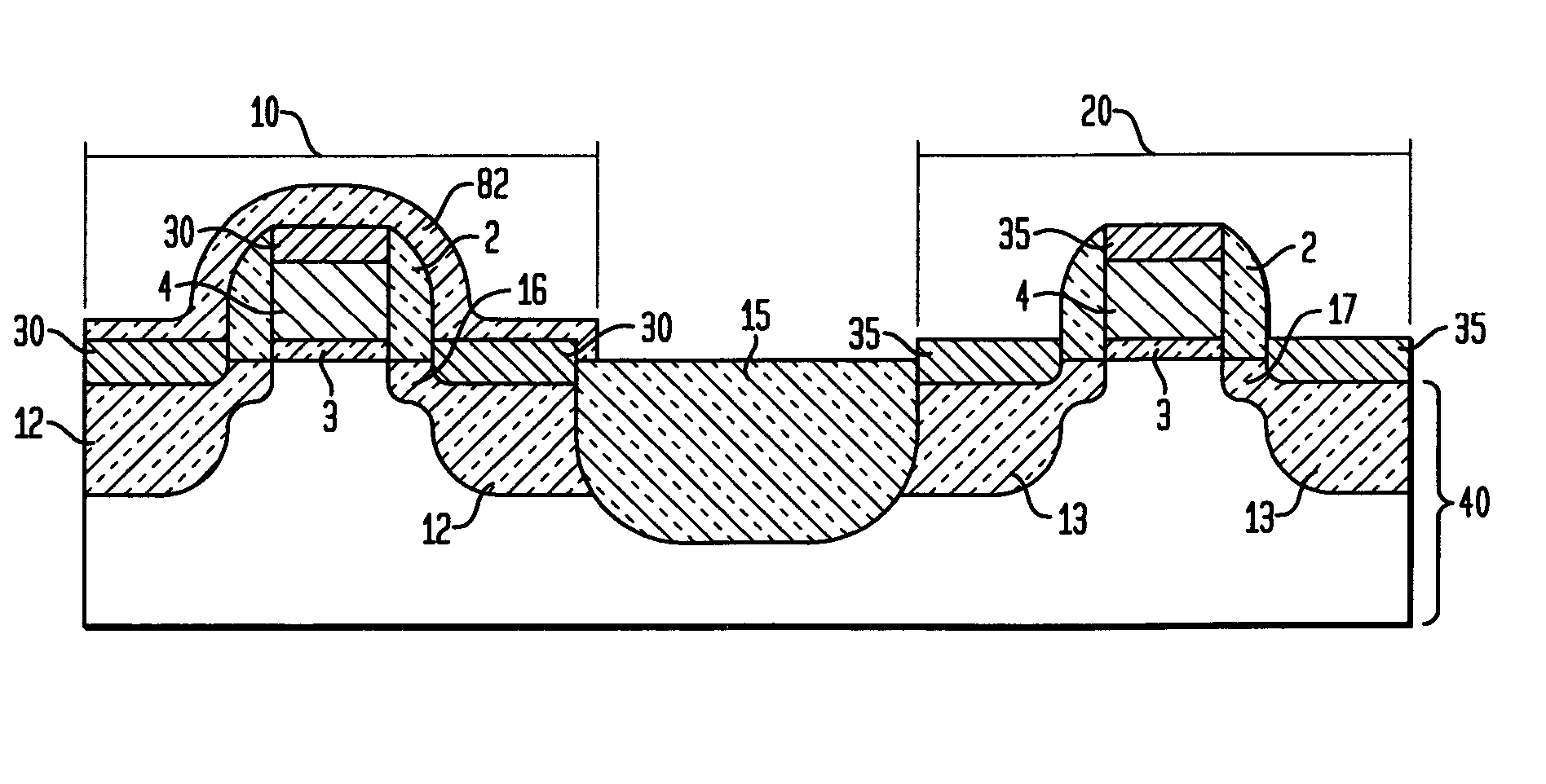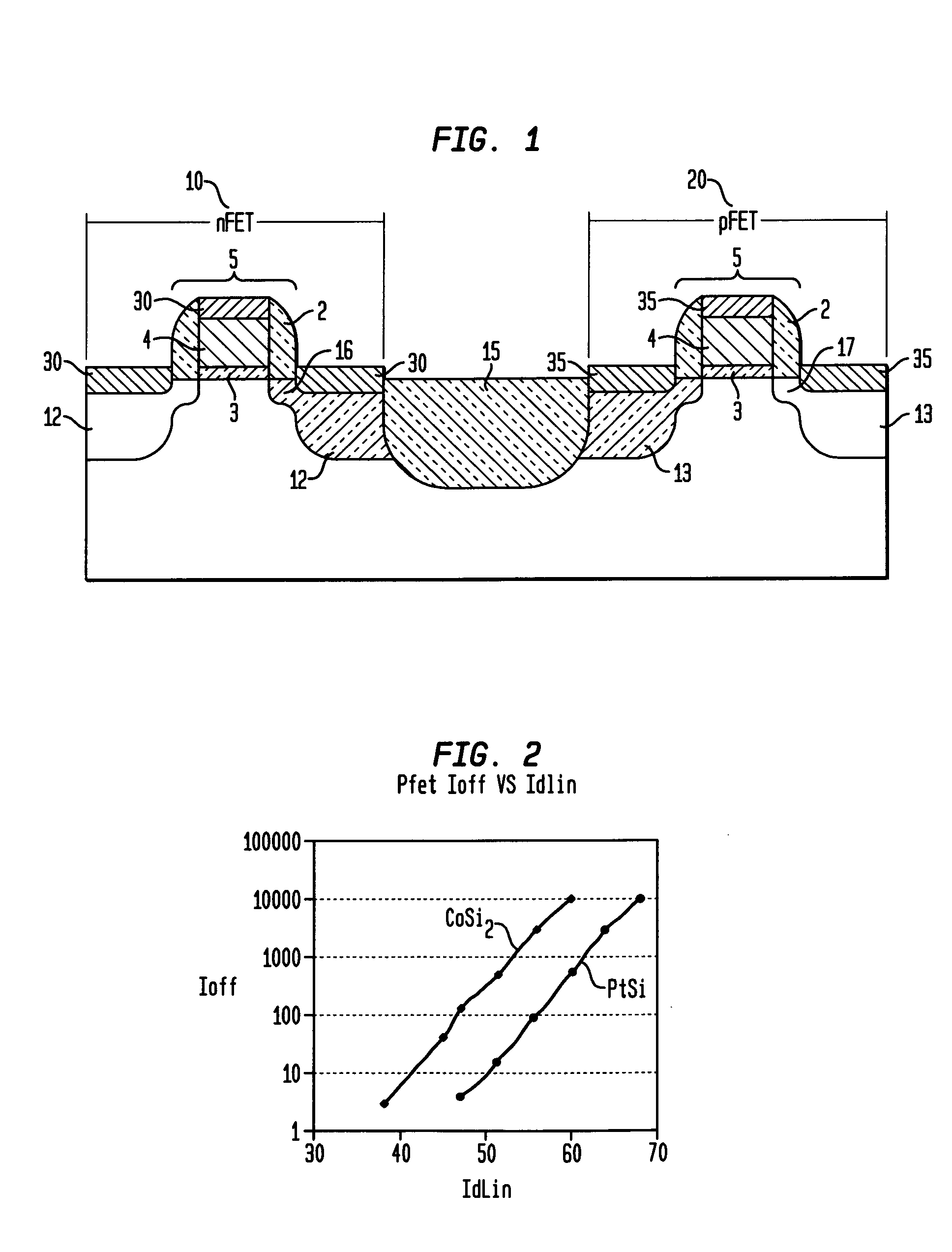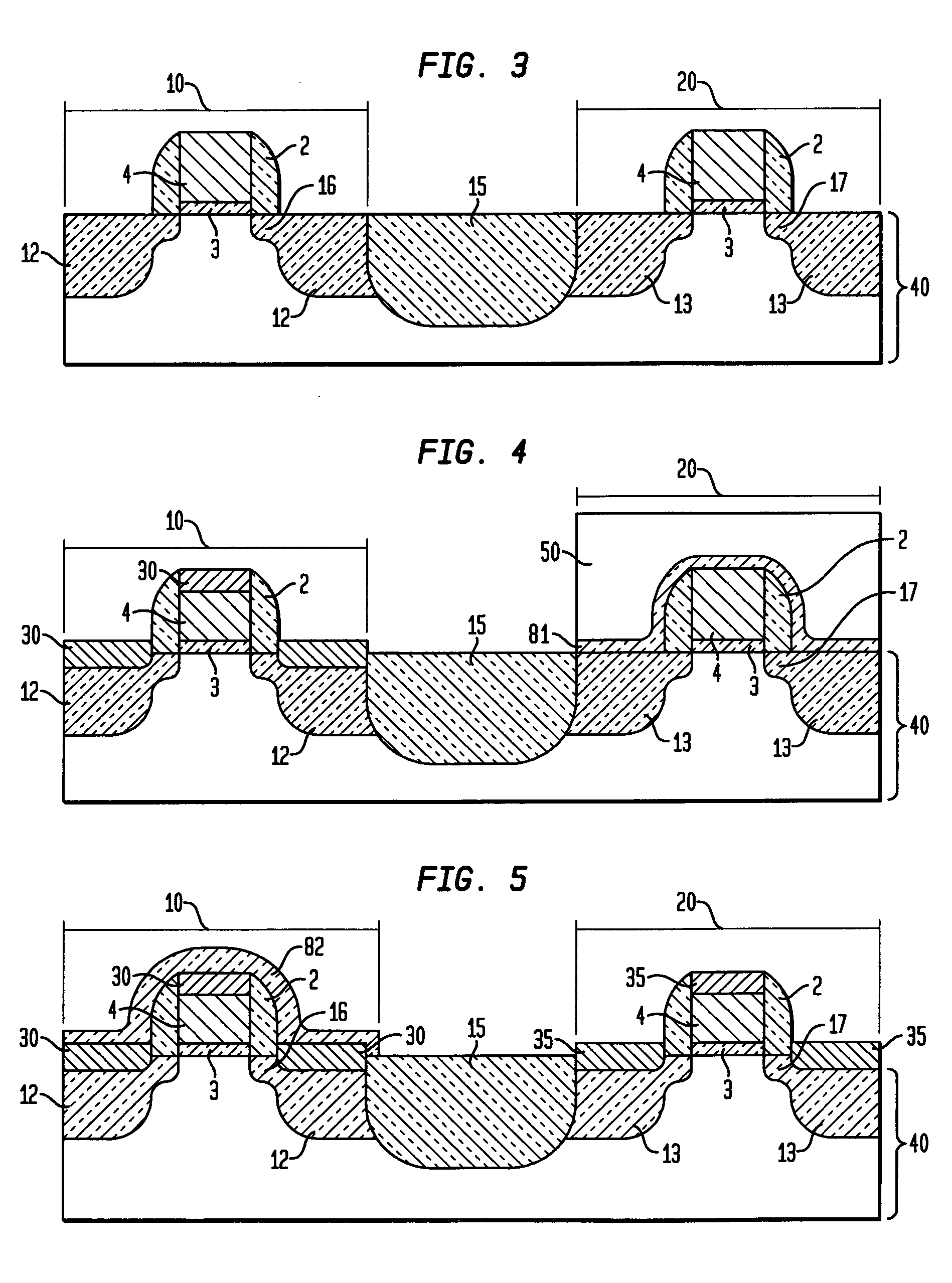Dual silicide process to improve device performance
a technology of suicide contact and mosfet, which is applied in the direction of semiconductor devices, electrical equipment, transistors, etc., can solve the problems of reducing and mosfets beginning to reach their traditional scaling limits, so as to reduce the resistance of mosfets
- Summary
- Abstract
- Description
- Claims
- Application Information
AI Technical Summary
Benefits of technology
Problems solved by technology
Method used
Image
Examples
first embodiment
[0060] The method for forming the above-described semiconducting structure, as depicted in FIG. 1, is now described with reference to FIGS. 3-10. the inventive method is depicted in FIGS. 3-5 which depict (through cross sectional view) one embodiment of the inventive method for providing a CMOS structure having low resistance metal suicide contacts to pFET device and a different low resistance metal suicide contacts to nFET device regions with the suicide differences tailored to improve contact resistances for the differing device types.
[0061] Referring to FIG. 3, an initial structure is provided having nFET device regions 10 and PFET device regions 20 formed on a substrate 40 of silicon (Si)-containing material. Si-containing materials include, but are not limited to: silicon, single crystal silicon, polycrystalline silicon, silicon germanium, silicon-on-silicon germanium, amorphous silicon, silicon-on-insulator (SOI), silicon germanium-on-insulator (SGOI), and annealed polysilicon...
second embodiment
[0087] Referring now to FIG. 6, in the present invention, following the formation of the low resistance n-type silicide contact 30, the first protective layer is removed from the substrate 40 and a second metal layer 45 is deposited directly atop the low resistance n-type silicide contact 30 in the nFET device region 10 and the substrate 40 surface of the pFET device region 20. The first protective layer is removed by a highly selective etch process that removes the first block mask without substantially etching the formed n-type silicide contact 30 or the surface of the p-type device region 20.
[0088] Following first protective layer removal, the surface of the low resistance n-type silicide contact 30 and the p-type device region 20 are then cleaned to provide a clean surface for silicidation. The cleaning process may be a conventional chemical clean as known within the skill of the art.
[0089] A second metal layer 45 is then deposited directly atop the pFET device region 20 and th...
PUM
 Login to View More
Login to View More Abstract
Description
Claims
Application Information
 Login to View More
Login to View More - R&D
- Intellectual Property
- Life Sciences
- Materials
- Tech Scout
- Unparalleled Data Quality
- Higher Quality Content
- 60% Fewer Hallucinations
Browse by: Latest US Patents, China's latest patents, Technical Efficacy Thesaurus, Application Domain, Technology Topic, Popular Technical Reports.
© 2025 PatSnap. All rights reserved.Legal|Privacy policy|Modern Slavery Act Transparency Statement|Sitemap|About US| Contact US: help@patsnap.com



